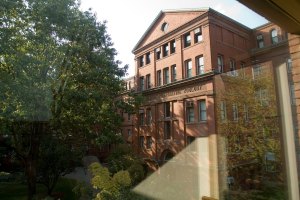This month in Harvard history
Feb. 28, 1902 — The Athletic Committee approves the formation of a swimming club.
Feb. 5, 1903 — The Semitic Museum formally opens.
Feb. 12, 1942 — Physical Education and Athletics Director William J. Bingham ’16 announces a program of compulsory exercise — four hours per week — for all undergraduates, to prepare them for military service or other war duties. The program, which takes effect on April 6, emphasizes “physical conditioning and hardening” instead of recreation, Bingham explains. Exempted are members of the current senior class and those whose physical condition prohibits strenuous activity.
February 1943 — The presidents of Harvard, Yale, and Princeton jointly announce that because of wartime conditions, intercollegiate athletics cannot proceed as usual. The statement sets forth a general operational framework for the three institutions, which remain free to make their own particular plans. While many details are yet to be worked out, Harvard for the moment plans to stress intramurals and recognizes that certain sports may have to be suspended for the duration of the war.
Feb. 16, 1950 — A service in the Memorial Church, a Phillips Brooks House tea and open house, and an Eliot House banquet mark the 50th anniversary of the opening of Phillips Brooks House (actual opening: Jan. 23, 1900).
February 1963 — Randall Hall (1899), home of the University Printing Office since 1916, falls to the wrecker’s ball to make way for William James Hall.




